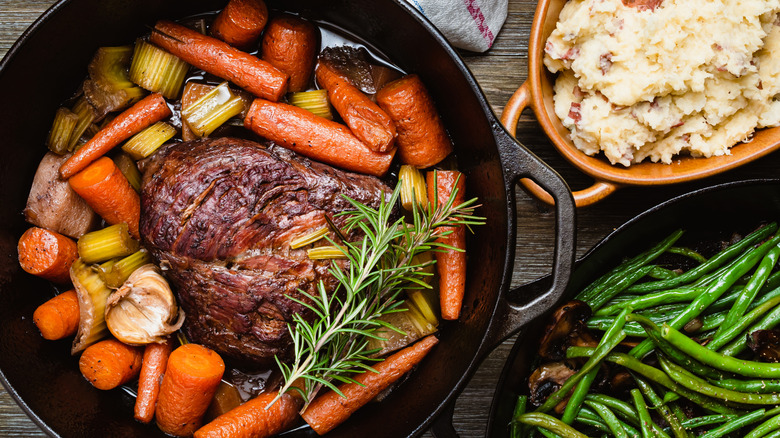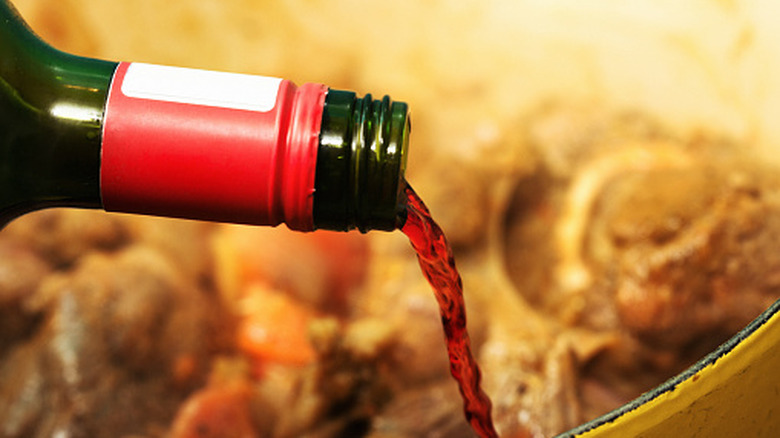The One Step You Should Never Skip For More Flavorful Pot Roast
Pot roast is one of the coziest and most classic of all the comfort food dishes, and choosing the best cut of meat for pot roast is key to the success of this slow-cooked dish. But if you really want to make pot roast more flavorful, then there's one step which you absolutely must not skip: deglazing the pan.
So what exactly is deglazing? It might sound like a complicated culinary term, but it simply refers to adding some liquid to your hot pan once you've taken out the seared meat. As the liquid sizzles, it loosens all the caramelized brown bits — known as fond, if you want to get technical — which are actually packed with flavor. These tasty, dislodged pieces, which are the core of many tasty pan sauces, melt back into the liquid as it reduces and boost the gravy for your pot roast.
To really maximize the flavor, use the same Dutch oven to both sear and braise your seasoned meat. Once it's beautifully browned, transfer it to a plate, drain any excess fat from the Dutch oven, and add a cup of liquid to the pot. Stir and let it reduce before adding some stock and returning the meat to the Dutch oven along with some aromatics. While red wine is a popular choice for deglazing pot roast, you can actually use all sorts of delicious alternatives, depending on your preference.
What's the best liquid for deglazing a pot roast pan?
If you do choose a classic red for deglazing, a bold and tannin-rich Cabernet Sauvignon is the best red wine for pot roast, or you could try Malbec or Côtes-du-Rhône. You could also use a white wine, such as a naturally acidic unoaked Chardonnay or crisp Sauvignon Blanc. But it is worth noting that dry wines are better for cooking, so don't choose something that's overly sweet.
If you want an alternative to wine, you could also use beer for deglazing and braising, or try fortified wines like sherry, madeira, or port for a richer and more robust flavor. To lose the booze, you can easily swap the wine or beer for a couple of tablespoons of red wine vinegar (which only has trace amounts of alcohol), beef stock, or even a tart juice, such as cranberry.
Since you've started your gravy on such a strong note with the flavorful fond, it's also important to finish it the right way, no matter which liquid you've used. For this, you'll want to make a beurre manié to thicken the sauce at the end of the cooking time. Again, it might sound like a fancy French term, but it simply means mashing together equal amounts of softened butter and flour with your hands (or using spoons) to make a doughy paste. Whisk this elegant-sounding yet ugly-looking mixture into the hot gravy, and it will become rich and gorgeously glossy.

